Jesuit Asia Pacific Conference
As a background, the JCAP is one of six Jesuit conferences around the world and covers Jesuit life and service in Asia Pacific.
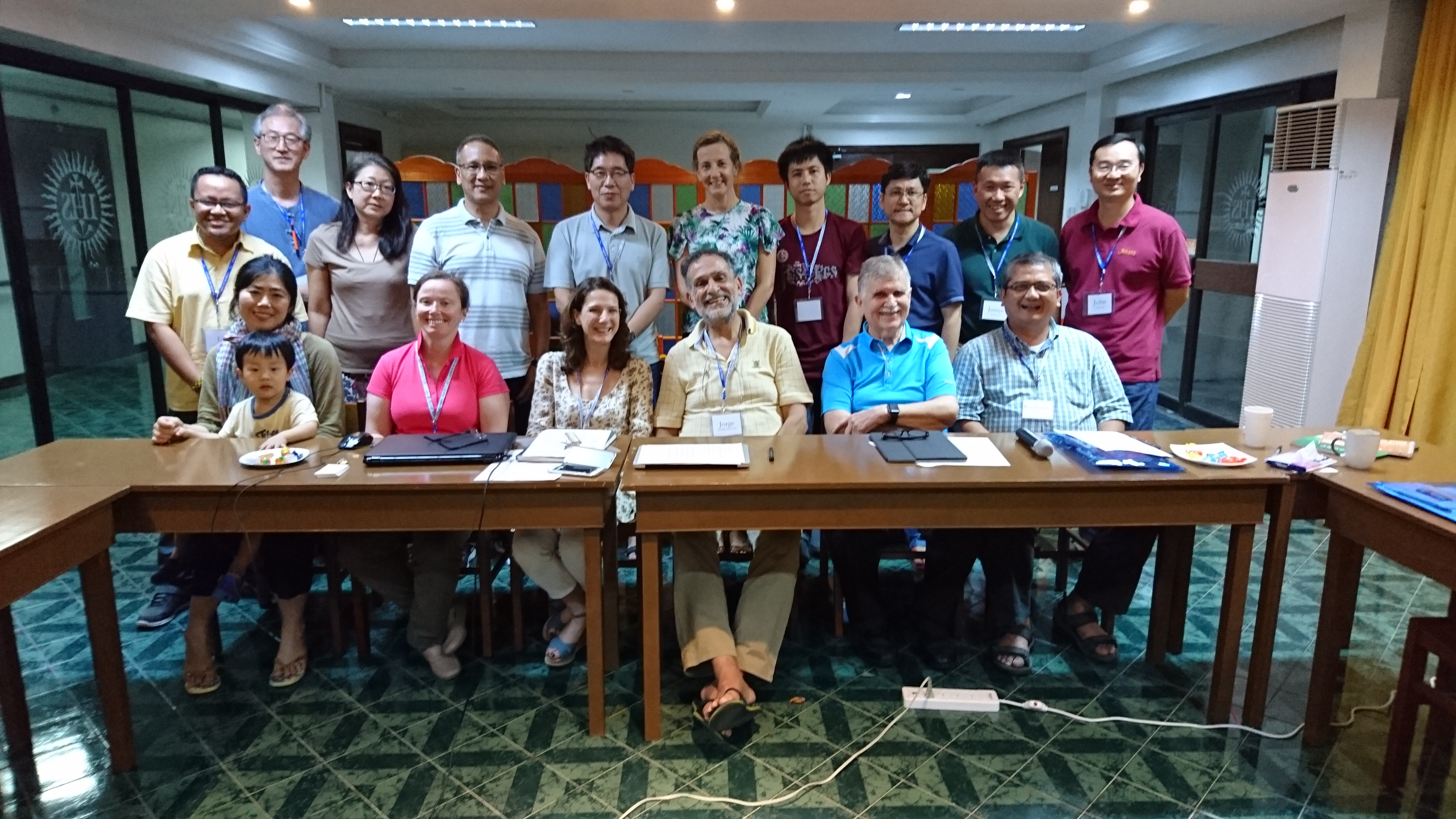
As a background, the JCAP is one of six Jesuit conferences around the world and covers Jesuit life and service in Asia Pacific.
UPDATE: The chapel has been constructed. Thank you to all benefactors!
On March 16, 1906, Fr. Manuel Valles, S.J. arrived as the first chaplain assigned to Culion. He immediately gave workmen instructions to help with the daunting tasks of the leper colony. In the next years, the Jesuit Mission extended to the islets around the mainland, to lepers and non-lepers alike. With assistance from generous benefactors and friends, the Jesuits were responsible for building some hospitals, dormitories, schools, the church and chapels, roads and the airstrip, while taking care of the spiritual needs of the people. Presently, the work of the Jesuits is undertaken with the La Inmaculada Concepcion Parish and Loyola College of Culion with special ministry for the Indigenous People of Palawan.
Serving the Tagbanuas. In the 1990s, when the number of lepers drastically declined due to the implementation of the Multi-Drug Therapy (MDT), the chaplaincy’s mission for lepers became a point for reflection. After discernment, a new call to serve emerged in Culion, this time for our Tagbanua brethren.
The Literacy Program. In the early years of the literacy program, the parish spearheaded in establishing ties with nearby communities. In 2009, the first teachers who were parish catechists, were sent to teach our brethren basic reading and writing. During that year, the partnership with Cartwheel Foundation, Inc. was initiated in order to assist in the training of teachers which included the provision of learning aids designed specifically for the Tagbanuas. The year 2010 marked the first graduates of the adult literacy program and in the last five years , the program, now recognized by the Department of Education, has expanded to include grade school children.
After 110 years of love and service, on July 21, 2016, the Jesuits of the Philippine Province will formally turn-over La Inmaculada Concepcion Parish to the care of the Apostolic Vicariate of Taytay.
Turnover of the La Inmaculada Concepcion Parish.The Philippine Jesuits have been declining in numbers over recent years. Because of this, the Philippine province, cannot sustain all of its ministries. In this regard, some of the Jesuit parishes had to be turned over to the local clergy including the La Inmaculada Concepcion Parish. However, the Jesuit’s work in Culion will still continue thru the Loyola College of Culion, where the IP Literacy Program will fall under.
As part of the turnover agreement with Bishop Edgardo S. Juanich of the Apostolic Vicariate of Taytay (AVT), a new rectory with some facilities had to be built since the Jesuits will still reside at the present one. Thus, the “Fr. Manuel Valles, S.J. Parish Center and Rectory” currently in construction will serve as the residence of the incoming parish priest from AVT. It will house the parish office as well.

Reprinted from Windhover, July 2011. In the light of recent events; the bloody dispersal of farmers in Kidapawan, drought in Mindanao and the coming national elections, the article is worth a re-read.
Prayer is contact or communion with God. We reach out to God and slow down to review our deepest desires in life. Through prayer we tap into an infinite source of faith, hope, love and strength. We develop a sense of God and we communicate and dialogue with God.
 Prayer becomes a one-sided monologue when we always think of formulations, petitions or thanksgiving. True prayer is silencing the self to listen and learn from God. Our prayers are too scripted and wordy. We focus on our efforts rather than on God’s action. Anthony de Mello said, “The final barrier between us and God is our concept of God . . . Where the self is, God is not.”
Prayer becomes a one-sided monologue when we always think of formulations, petitions or thanksgiving. True prayer is silencing the self to listen and learn from God. Our prayers are too scripted and wordy. We focus on our efforts rather than on God’s action. Anthony de Mello said, “The final barrier between us and God is our concept of God . . . Where the self is, God is not.”
For many, prayer is simply a pious practice or obligatory duty. After a while, these practices become a dry routine, a self-cultivating hobby or an opiate isolating us from reality. If the right fruits are not present, it means the spirit of God is not there, and what we consider as prayer may not be prayer at all.
Jesus did not give us complicated instructions about prayer. He told his disciples not to be like the pagans who use too many words when praying (Mt 6:5-8). He taught his disciples to pray to a God who is not distant but who is a loving and compassionate Father.
In the Lord’s Prayer, Jesus did not give us a formula to memorize and recite. The prayer is a preamble, synthesis or guiding life-principle that proclaims God’s goodness, providence, compassion and forgiveness in our lives. It is a call to do what is right and just and to treat others the way God treats us.
Part of the teaching of Jesus about prayer (Luke 11:1-13) says, “Ask and you will receive, seek and you shall find.” We focus on the asking and seeking part, but we ignore the concluding summary that says, “How much more, then, will the Father in heaven give the Holy Spirit to those who ask him.” The correct prayer attitude is to seek God’s guiding spirit.
More than teaching us how to pray, Jesus showed us what prayer is. His actions spoke more than his words. This is why “prayer is not something you do; prayer is something that happens to you.” Today we say prayer is not a noun; it is a verb, an action word. We also say God is a verb, not a noun.
 Many pray the way Jesus told us not to pray. We use plenty of words and make our practices indispensable. In the Beatitudes, Jesus said that the pure of heart will see God. We cloud the transparency of God’s goodness and truth when we clutter our prayer with too many beliefs and rituals. We distract and deceive ourselves with more form rather than substance. We focus on human tradition and ignore God’s spirit.
Many pray the way Jesus told us not to pray. We use plenty of words and make our practices indispensable. In the Beatitudes, Jesus said that the pure of heart will see God. We cloud the transparency of God’s goodness and truth when we clutter our prayer with too many beliefs and rituals. We distract and deceive ourselves with more form rather than substance. We focus on human tradition and ignore God’s spirit.
Genuine spirituality focuses on the spirit of God rather than on what we do. Religiosity without true spirituality clings to plenty of externals. The more real the spirit, the more free we are to understand God‘s ways. Our comfortable practices can become obstacles blocking our conversion and renewal.
St. Ignatius of Loyola (patron of retreats) taught us to find God in all things and be active contemplatives. We find God not only in our piety but also in our daily lives, through ordinary and natural ways. All our contrived and artificial efforts may be in vain, because “God is above and beyond all our ways and means and methods.” We cannot control or manipulate God.
Because we do not understand what we do or say, we turn prayer into a recitation of meaningless words or a perpetuation of obsolete practices. We imagine the infinite creator of the universe at our beck and call, ready to listen to our petitions and grant our requests. We believe God listens to our prayers, and so we pray for safety or good health. When tragedies happen we say our faith is weak or it’s God’s will. We refuse to accept the truth and change our beliefs, and we never acknowledge our wrong ideas of God and prayer.
If God is truly everywhere, we do not need to rely on our contrived methods to be with God. All we have to do is drop our preconceived ideas of God and prayer. Prayer is a means, not an end. It is said that “we do not give ourselves to prayer. We give ourselves to God… We must pray the way we can, not the way we cannot.” The steps and methods help us to approach God, but they can also be obstacles to God.
There are paradoxes in prayer. There are those who always pray but are not really praying, and there are good and spiritual people who do not appear to pray. This is one reason why Jesus taught us not to judge by appearances.
Prayer should be like breathing, which is natural and effortless. The more we are conscious of our breathing and the more effort we exert, the more difficult it becomes. The more contrived prayer is, the more mechanical and unnatural it becomes. Ideally, our prayer should be as natural as breathing. This is contemplation in action. This is finding God in all things.
Prayer is also like marriage. Once past the honeymoon period of the novitiate or the retreat, real prayer involves our day-to-day attitudes, behavior and dealings with others. Faith and life are integrated in real prayer.
True prayer is selfless and realistic. Our behavior, lifestyle, priorities, attitudes and decisions reveal the kind of prayer we have. God’s correct spirit produces the right results. True prayer enables us to discern what is from God and what is not. Discernment helps us in deciding what is right and just.
There are pious and prayerful people who remain ungodly and self-centered. We can be praying outwardly but not spiritually. We may pray always and still remain insensitive to God and the rest of reality. This is false prayer. It fulfills some obligation or practice but has no real spirit in it. We do not always worship in spirit and in truth.
Real prayer produces the right fruits, because it has the right spirit – God’s spirit. The fruits of God’s spirit are love, joy, peace, patience, kindness, goodness, faithfulness, gentleness and self-control (Galatians 5:22). Together with justice and mercy, they form the essence of true religion and real prayer. They show us that God is real and present in our daily lives – personally, institutionally, culturally and socially.


The Literacy Program in Culion, Palawan aims to develop the reading and writing skills of both the adults and children in selected Tagbanua communities. The program also aims to preserve the Tagbanua’s local culture and develop stronger and more confident communities.

In 1904, Gov. Wright of the American Commonwealth, established Culion as a leper colony paving the way for the first batch of 370 lepers from all over the archipelago to settle in 1906. In the same year, American Jesuits were sent to Culion to start chaplaincy work for the lepers and employees of the Philippine Health Service. Over the years, the Loyola College of Culion was established and has seen the chaplaincy to La Inmaculada Concepcion Parish grow and flourish.
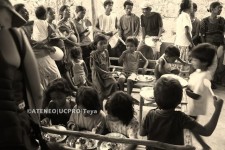 Fr. Bok Arandia SJ, during his stay in Culion wrote, “after the establishment of the leper colony, the indigenous Tagbanua communities who were the original inhabitants of the Culion peninsula were forced to settle in remote islands, with limited access to basic social services and education. They manage to survive through fishing, food gathering, and primitive agriculture. However, because of their inability to read, write and count, certain devious individuals have taken advantage of their ignorance, cheating them to sell their produce and catch at scandalously low prices. Politicians have likewise used them to secure victory during elections, gathering and containing them in undisclosed holding areas distant from the influence and access of their political rivals.”
Fr. Bok Arandia SJ, during his stay in Culion wrote, “after the establishment of the leper colony, the indigenous Tagbanua communities who were the original inhabitants of the Culion peninsula were forced to settle in remote islands, with limited access to basic social services and education. They manage to survive through fishing, food gathering, and primitive agriculture. However, because of their inability to read, write and count, certain devious individuals have taken advantage of their ignorance, cheating them to sell their produce and catch at scandalously low prices. Politicians have likewise used them to secure victory during elections, gathering and containing them in undisclosed holding areas distant from the influence and access of their political rivals.”
In 2006, the Philippine province re-examined its mission in Culion. Since there was no need for chaplaincy work due to the fewer number of lepers in the island, the Province decided to help the Tagbanuas, an Indigenous People community, through a literacy program.
In 2008, through the help of the Sisters of St. Paul of Chartres, a literacy program was began with some teachers from the parish. In 2011, Cartwheel Foundation brought their expertise and modules to help aid and systematize the program. Since then, the parish, SPC and Cartwheel have been partners in this endeavor.
The program
Before 2011, literacy programs that were introduced had no sustainability mechanisms in place. Hence, there was a crucial and urgent need to establish one that will remain a fixture in order to equip members of the communities with essential literacy and life skills.
The first six-month cycle of the new program began at the end of August, 2011 with forty (40) adult learners from two (2)Tagbanua communities – Alulad and Marabal.
In June 2013, the adult capability-building program ran its third cycle, further expanding operations to four (4) indigenous communities from the original two (2) pilot areas. They have also instituted an early childhood education program for the Tagbanua communities in Culion.
Currently, the Adult Literacy Program is run by the Cartwheel Foundation, Our Lady of the Immaculate Concepcion Parish and the St. Paul of Chartres Sisters. Fr. Arthur Nebrao, SJ is currently Parish priest of La Inmaculada Concepcion.
Typhoon Yolanda hit Culion with devastating effects. These photos were taken during the visit of the Ateneo Disaster Response and Management (DReaM) Team and the Simbahang Lingkod ng Bayan in Culion, Palawan last December 5 to 9. The team visited the different areas and islands devastated by Typhoon Yolanda.
Indigenous Peoples, like the Tagbanuas are generally discriminated not only because of their physical appearance but because many of them have low self esteem due to the lack of reading and writing skills.
Please donate to support the Literacy program and help build their lives in the aftermath of typhoon Yolanda! The Literacy program’s next steps are:
Click the Blue box above to make an on-line donation. Or else, click here.
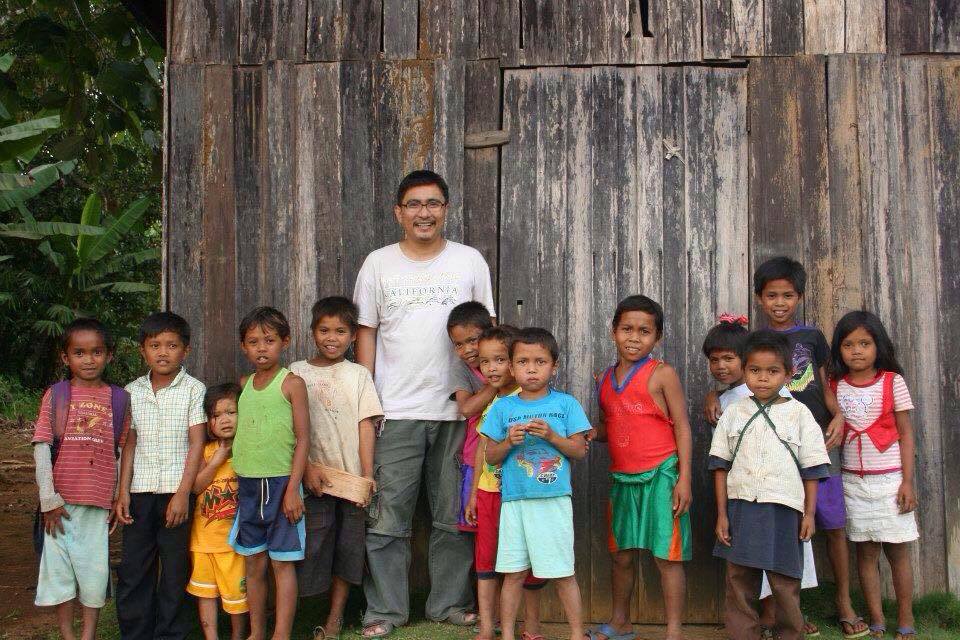
St. Therese of the Child Jesus was established by Jesuit missionaries thirty (30) years ago. It subsists largely due to the generosity of the foreign and local benefactors, mostly friends and relatives of missionaries assigned in Miarayon, who see the wisdom in educating the youth of the mission area alongside delivering spiritual nourishment of the people.
When the pioneer missionaries get transferred to other assignments, benefactors and donors of the school stop supporting the school or transfer their support to other projects of the previous missionaries. Often, the school is left operating on a shoe-string budget and on many occasions, borrows funds from the Philippine Province of the Society of Jesus for the needed upgrade and upkeep of its facilities.
The passage of The Enhanced Basic Education Act (R.A. 10533) in 2013, which seeks to increase and improve compulsory education from 11 to 12 years, adds to the burden because of the need to accommodate a greater number of students.
Miarayon is a barangay of the fourth class municipality of Talakag, Bukidnon. It is a community of tribal minorities: Talaandigs (80%), Dumagats (15%), Maranaw Moslems (4%) and Igorots (1%) comprising about 5,000 families. The local dialect is Binukid but most could speak the Visayan language. The area has limited access to water and electricity and the roads may be accessed mainly by motorcycle (habal-habal), horse-riding or walking. There is no reliable signal for telecommunication yet.
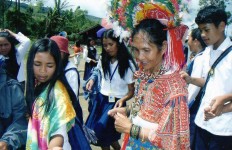
The Talaandigs are friendly people. They are deeply religious and value family and social kinship. They are reliable and industrious. Despite these traits, many remain poor because of the lack of opportunity to get proper education. To know more about the Talaandigs, view the full video made by Symantec Tooth and Gum Care here.
St. Therese School of Miarayon is the only High School operating in the area covering about five (5) barangays or villages with about seven (7) or so public elementary schools. The next available High Schools are some sixty (60) or so kilometers away from the centro. In 2015, there are approximately 320 students. However, this figure dips radically due to students who drop out within the first quarter of the school year. Of the students who continued, approximately 500 students have graduated and a good number have gone on to college and earned their degrees.
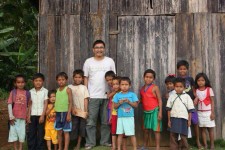
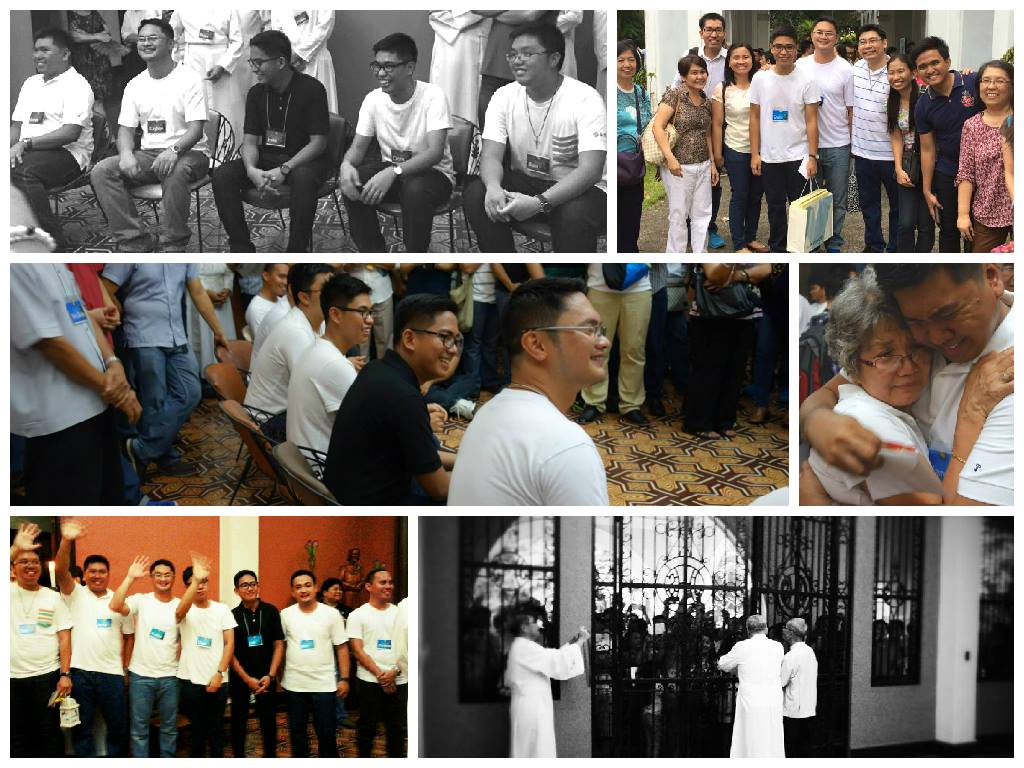
By Fr. Olivier Lardinois SJ, Assistant for Formation, Chinese Jesuit Province
This article was originally published in Jesuits in Asia Pacific 2015, the annual report of the Jesuit Conference of Asia Pacific. It can also be found in their website.
At the very heart of the Jesuit vocation lies a personal commitment to follow the call of Jesus to work through him, with him and in him at the service of the Kingdom of God, which grows anywhere love and justice flourish: “Follow me and I will make you into fishers of men” (Mark 1:17) This is
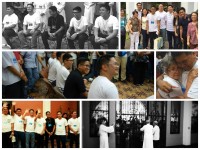
why several documents on Jesuit formation claim that God is the educator par excellence and why training for mission cannot succeed without helping the young Jesuit foster his friendship with Jesus. Through a solid and regular prayer life, the young Jesuit in formation cultivates his intimacy with Christ, which slowly teaches him how to better discern, teach, behave and love as Jesus himself would do. In fact, without an ability to convert himself daily in front of the Gospel and a deep desire to grow as a disciple of Jesus, a young man is unfit to enter or to stay in the Society of Jesus.
Another crucial dimension of Jesuit formation is to learn how to gain an ever-growing freedom of heart in front of all those things that can become a real obstacle to serving the mission well. Some examples of obstacles are over-dependence on the affection of our family or good friends, too great an attachment to material comfort, a recurrent desire to feel 100 percent secure, our own ideas or prejudices regarding other persons or social classes or cultures or religions, our inner fears and anxieties, a lack of faith in God’s actions, having too strong a need to have our achievements seen and praised by others, and giving too much attention to our own self-respect and face. This is why Jesuit formation endeavors to provide not just solid training in spiritual life towards conversion, but also a few psychological tools to help the future priest or brother to know his own personality better-his talents and limits, the inner wounds brought by early childhood, his patterns for leadership and the maintaining of relationships, his own gree, sexual impulse, anger or blues, etc. The more a man learns about how to cope well with his own imperfect character and psychology, the better he can serve others.
Another important challenge of Jesuit formation is to empower future priests and brothers so that they can serve, accompany and/or train people, with enough joy, abnegation, intelligence, discernment, common sense, discretion, flexibility, humility and creativity. Without possessing at least a few of these abilities, it will not be easy for them to pursue the main aims of the Jesuit mission: to inseparably promote faith and justice, to train men and women at the service of a more attractive Church and/or a better world, to do mission works at the frontiers i.e. where other priests usually do not go to serve, and to dialogue and cooperate with people of other cultures and/or religious faiths. This is why even as the young Jesuit studies philosophy or theology, he is asked to serve with confreres and collaborators in different kinds of challenging works to teach him how to work as part of a team and help him become a more mature, wise and loving human being. These works include service to the sick or to prisoners, teaching in a high school or university, social works at the service of the poor, intellectual research, preaching in front of an audience, youth training or pastoral leadership, media work, and spiritual guidance.
Last but not least, the main characteristic of Jesuit formation is the Magis Spirit. It means to learn how to reflect and to work at a deep level, so that the result of one’s efforts in mission work can produce many good and long-term fruit. Jesuit formation insists much on the high quality of intellectual  studies, which should not only include a solid introduction to the human sciences such as philosophy, social analysis and anthropology and/or psychology, but also good training on how to reflect,write or speak on various subjects in depth, with a sharp, critical spirit in front of the sources of knowledge which man uses, and with the realization that any reality if often quite complex to understand and judge. In this spirit, the young Jesuit is encouraged to experience at every stage of his formation various mission contexts, which will help him work effectively in today’s global and multi-cultural world.
studies, which should not only include a solid introduction to the human sciences such as philosophy, social analysis and anthropology and/or psychology, but also good training on how to reflect,write or speak on various subjects in depth, with a sharp, critical spirit in front of the sources of knowledge which man uses, and with the realization that any reality if often quite complex to understand and judge. In this spirit, the young Jesuit is encouraged to experience at every stage of his formation various mission contexts, which will help him work effectively in today’s global and multi-cultural world.